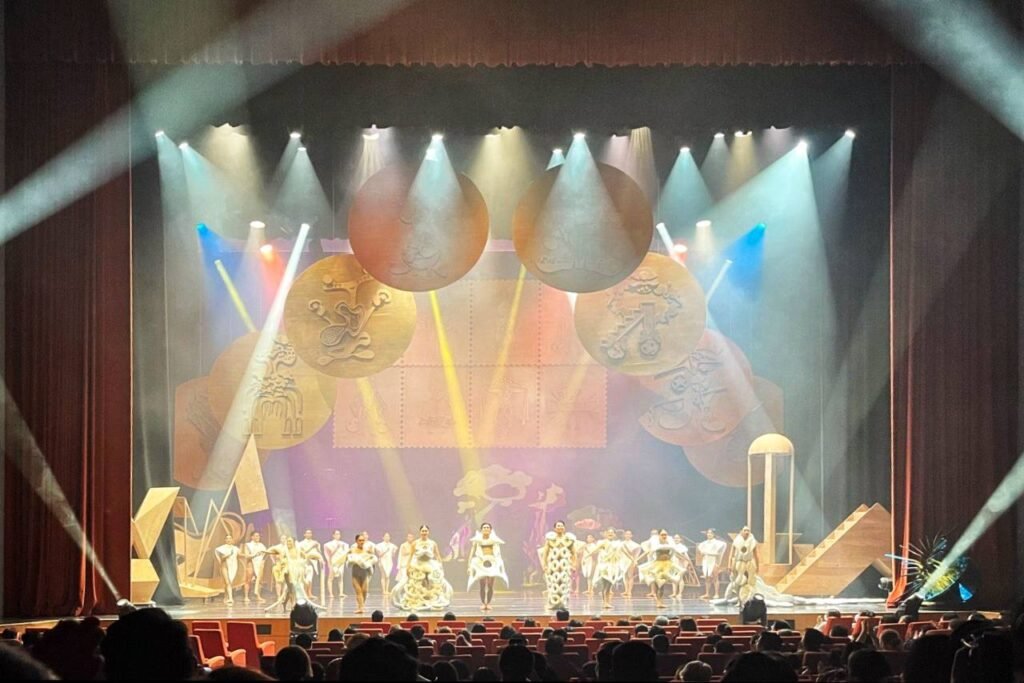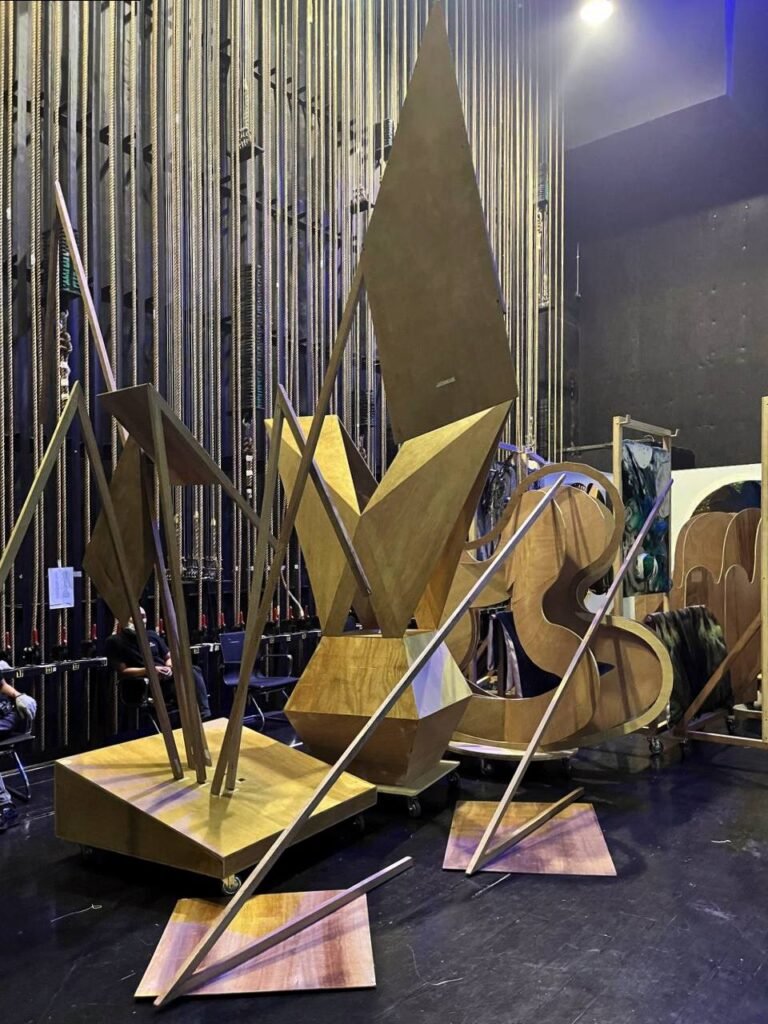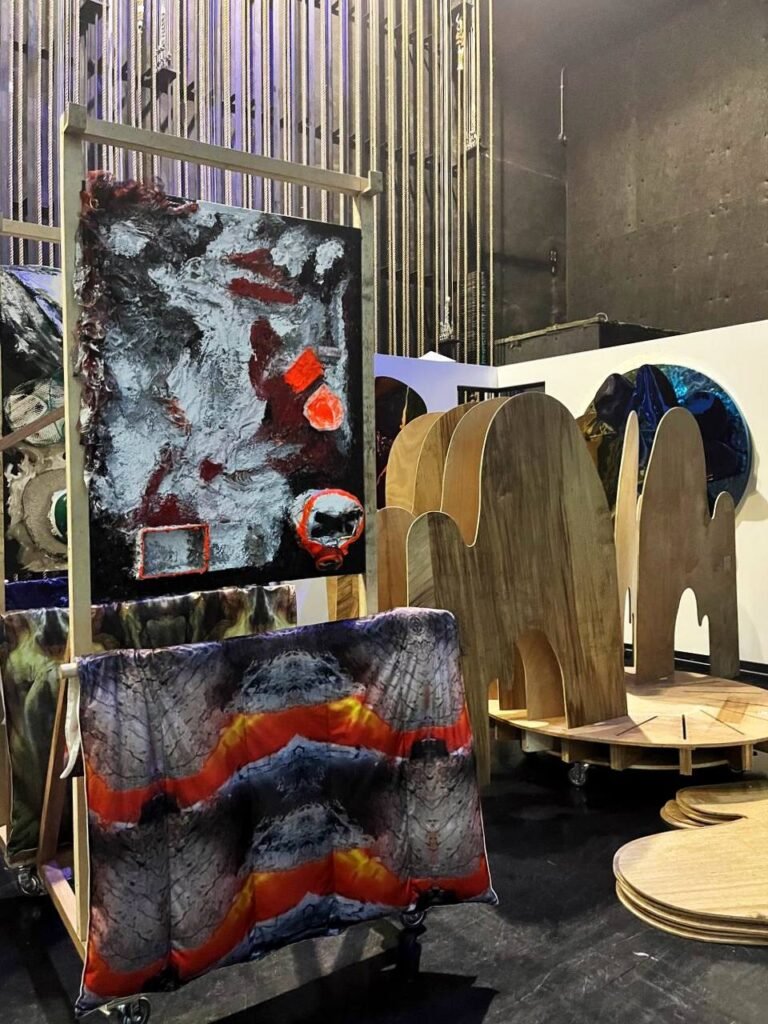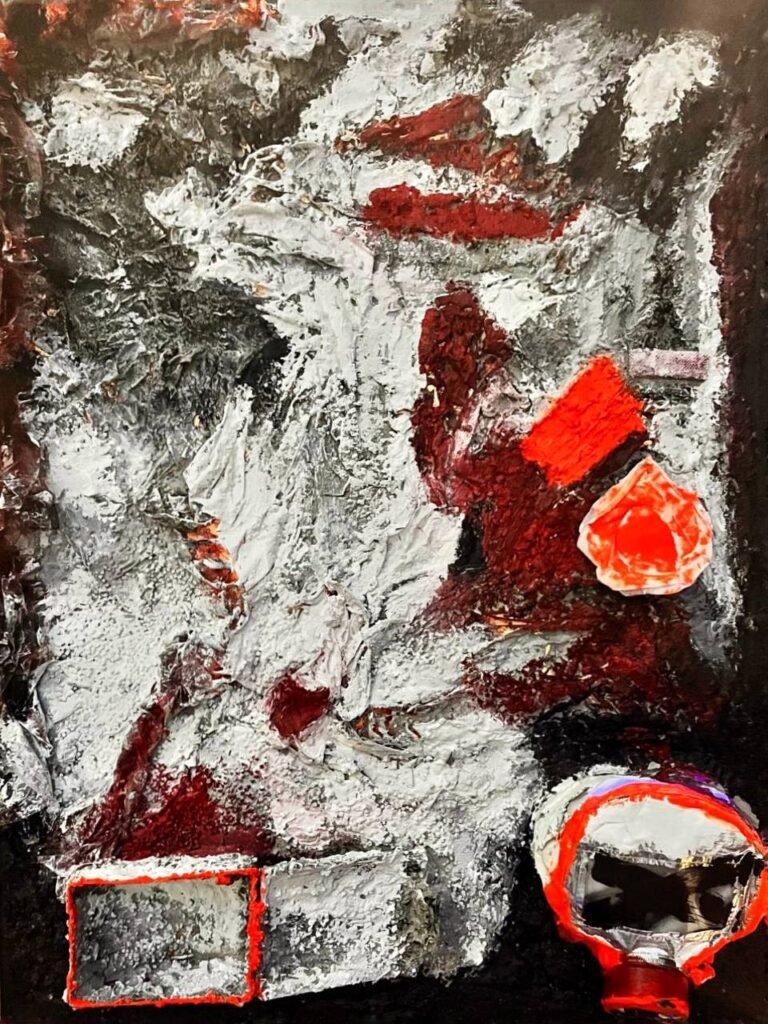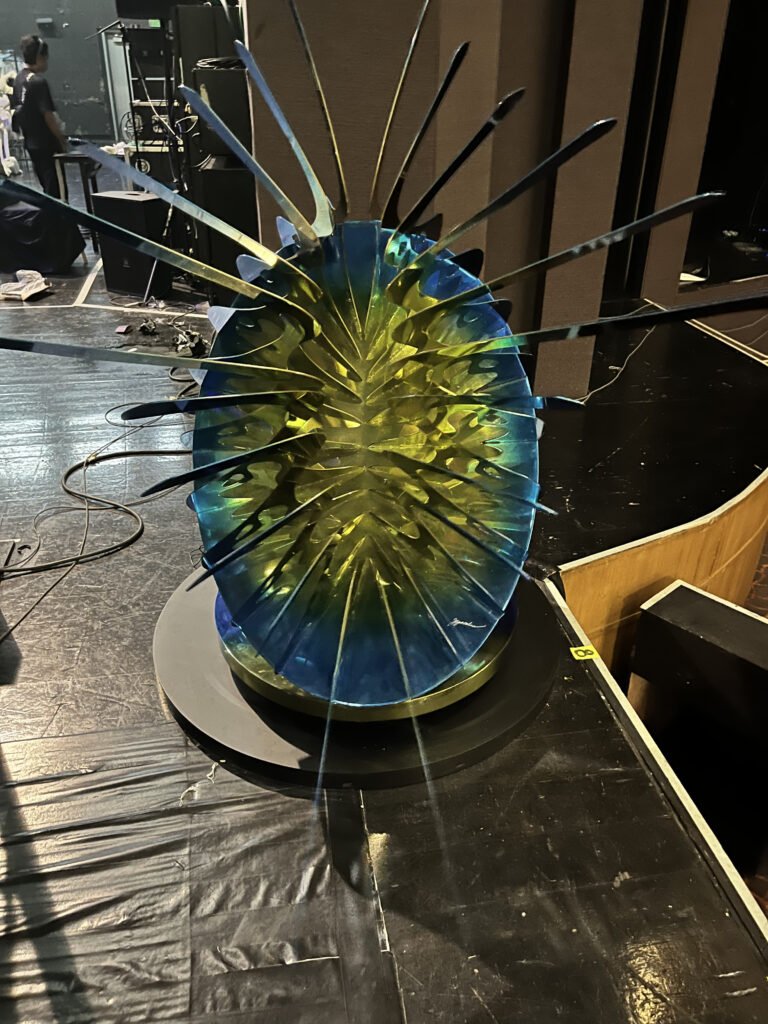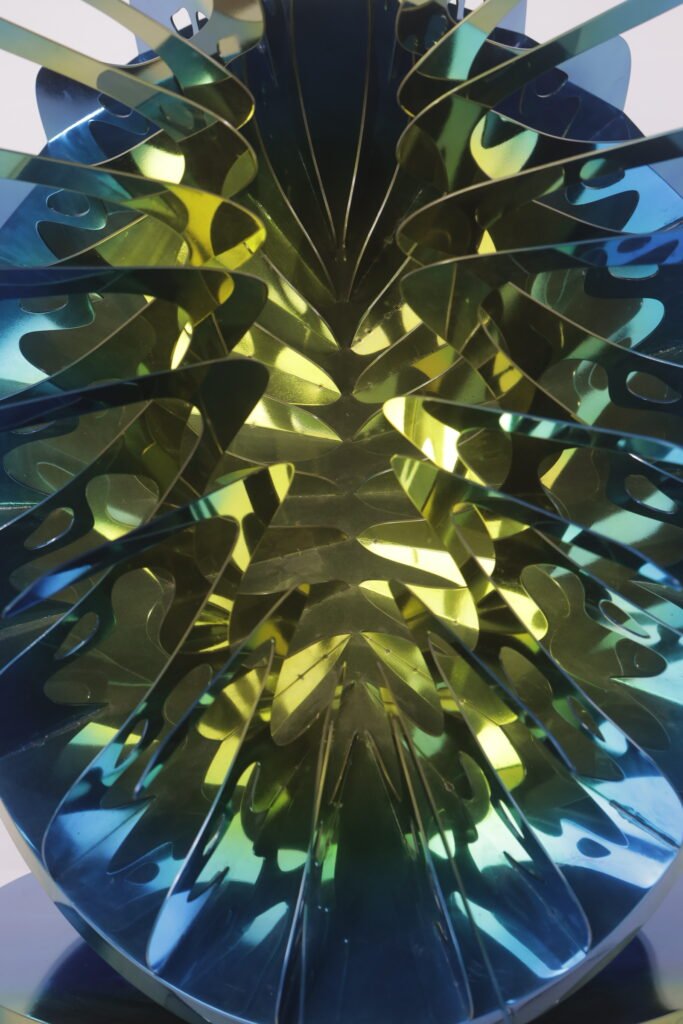Words and Images Gabrielle de la Cruz and the Diyosa team


Carlo Calma’s Diyosa is a contemporary adaptation of the Philippine mythology of Gods
and Goddesses found in nature. The five-act story is about a fantasy and dreamy mythical world that is rooted in strong Filipino culture, heritage, and good-old Pinoy humor. Using the ethos of sustainability, the play aims to deliver a message about climate change to challenge the present and empower future generations in the next 100 years. It is fun and entertaining with eclectic quirky god characters—fusing art, music, fashion, architecture, and the power of dance.
Diyosa’s first act is referred to as an apocalyptic dream, one that is similar to a “bangungot” (nightmare). This presents pressing issues with regard to the environment and follows themes of destruction and world chaos. The “mid-sleep” stage then follows, introducing the different Philippine gods or goddesses and reminding humans of their responsibility and capability to save the world. Almost across all acts, a character named Lakanda or lakas at maganda (strong and beautiful) is present. She is a human among the gods and goddesses who serves as a symbol of hope, realizing that her world is at risk and in need of restoration. In Act three, Lakanda falls into a deep sleep and the entire play takes the audience through Metamorphosis.
The dream then transitions into everyday Filipino scenes. This is where most of the humor of the show comes in as it depicts fragments of local Filipino culture and how this has evolved through time. The Diyosa team relates Act 4 to “jolting in sleep,” as this is meant to awaken audiences. The final act then wakes up to the positives and negatives of our current reality, allowing everyone to reflect on the possibilities of a better future. “The final image presents all the characters and the apparatuses together to show that everything is part of a world that you can change,” Calma revealed. “When we were doing our research for the play, we noticed how all the symbols of the elements such as air, sun, and wind are similar to elements in architecture. This allowed us to showcase a bigger picture, presenting how we have the power to transform both the natural and built environment.”
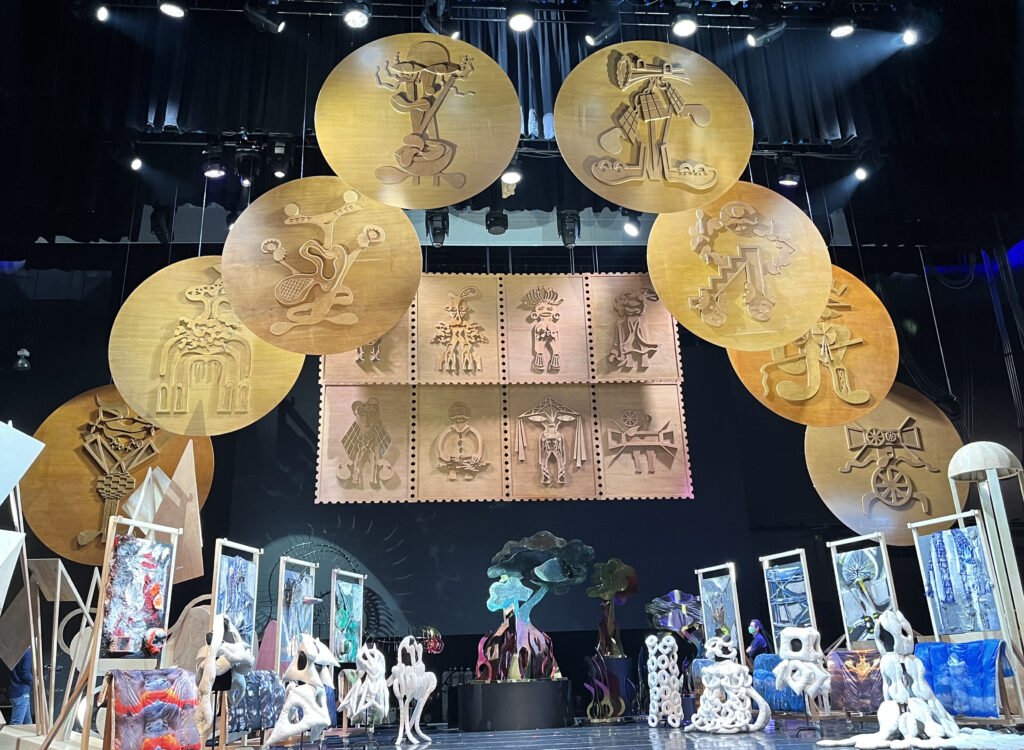
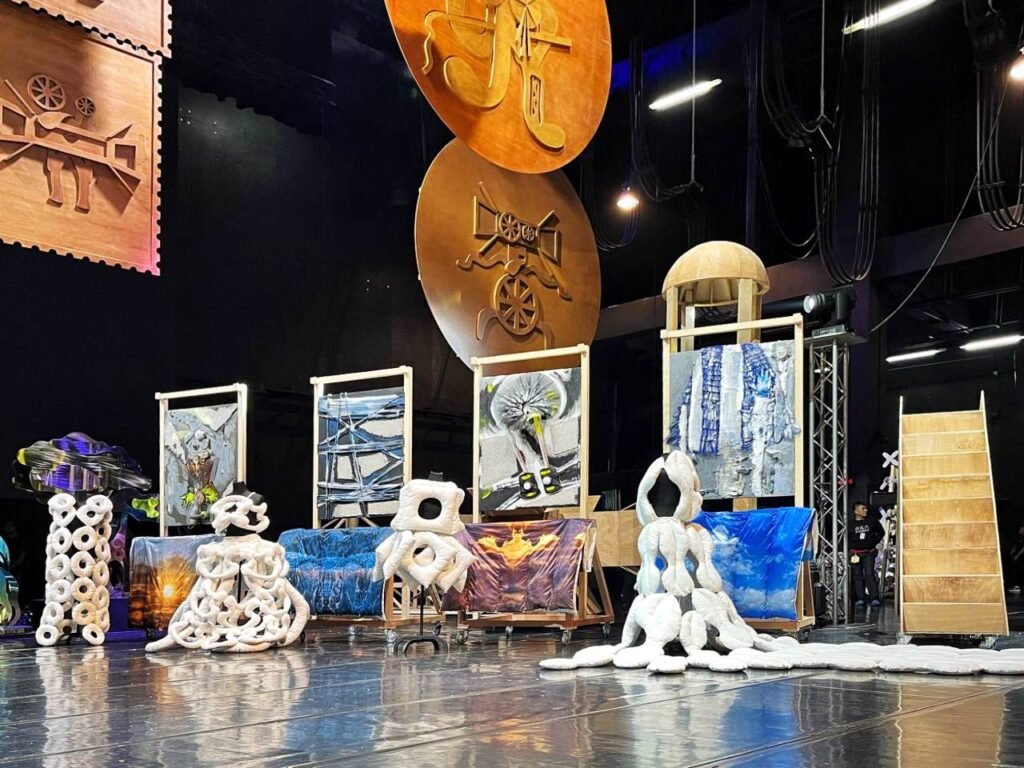
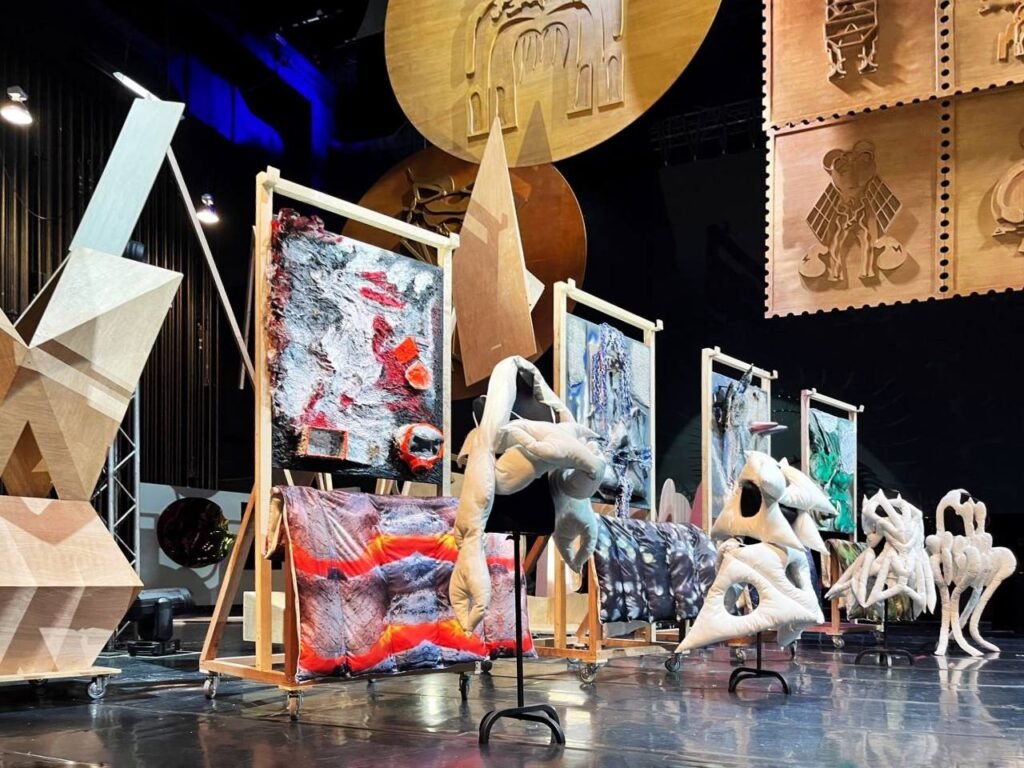
Soft Sculptures
“We wanted to articulate the elements of architecture into pieces of wearable installations like soft sculptures,” the Diyosa team said. The wearable installations are inspired by pillow formations that are both amorphous and geometrical, demonstrating how the things seen in nature can sometimes be symbolic or omnipresent. Made from recyclable foams, the pillow formations resemble stuffed illusions representing dreams and shadows. They can also be interpreted as effigies or doll characters that mimic the mythical creatures of gods and goddesses.
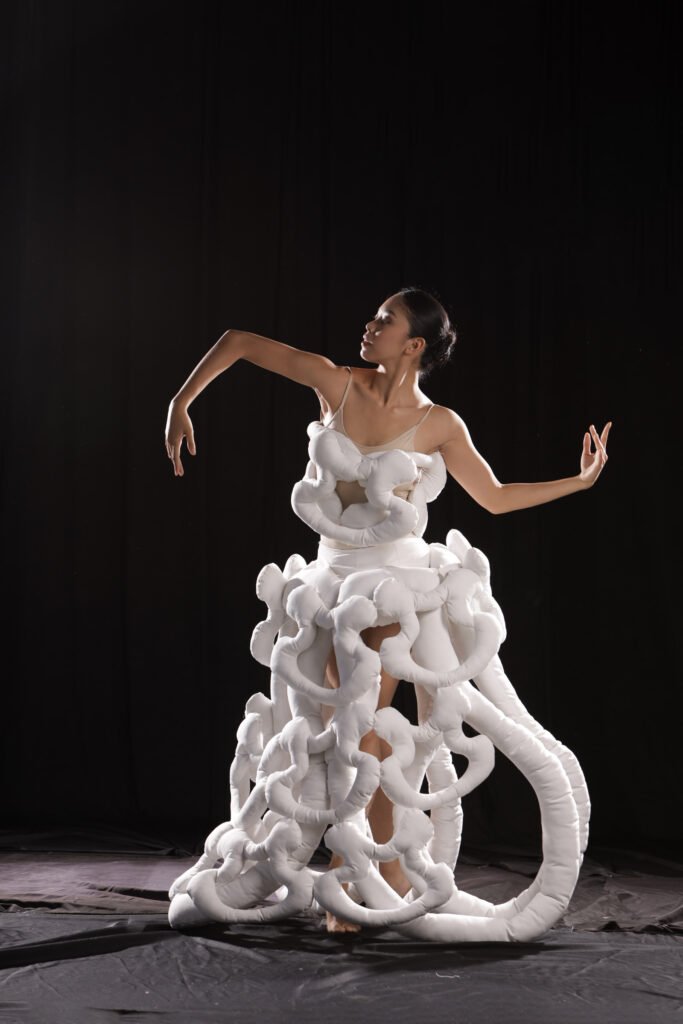

The cast of Diyosa all wore and danced with the wearable installations that corresponded to the message of their characters. Calma refers to these as “deconstructed clothing” and shared that three seamstresses from Ballet Philippines were stationed in his office starting January. “The good thing about having seamstresses from Ballet Philippines is that they already know the measurements of the participating dancers, so I just had to express my design vision for each costume.” While these wearable installations come in patterns and forms, the design had to ensure that dance movements will not be restricted. Calma added that only one piece was created for each set and that all dancers practiced with their respective costumes during rehearsals.
Ballet Philippines member Jemima Reyes, who played the main role of Lakanda, shared that they “did not really have to change the choreography” as Calma designed the costumes in a way that they are comfortable. “The restrictions were there and we had to adjust a lot because we had partnerings… my character, in particular, had the most consideration when it comes to movement and I would say that I was free to move especially during the solos.” Reyes pointed out that while Ballet Philippines already performed with installation art before, this was the first time that they had to “interact with pieces.”
Paloma Laforteza, who played Goddess of Air for Cast 2, revealed that her character had to showcase three different costumes in less than a two-minute dance. “I had to go through multiple changes not only because of the costumes but because we had to adjust to the amount of floor space given the presence of the apparatuses… it was a bit challenging at first but it wasn’t impossible.” Goddess of Star was primarily played by Ysabel Bernardo, who shared that her dance was pretty quick and involved partnerings and lifts. “We had to adjust, but I actually learned to enjoy performing with the costume.”
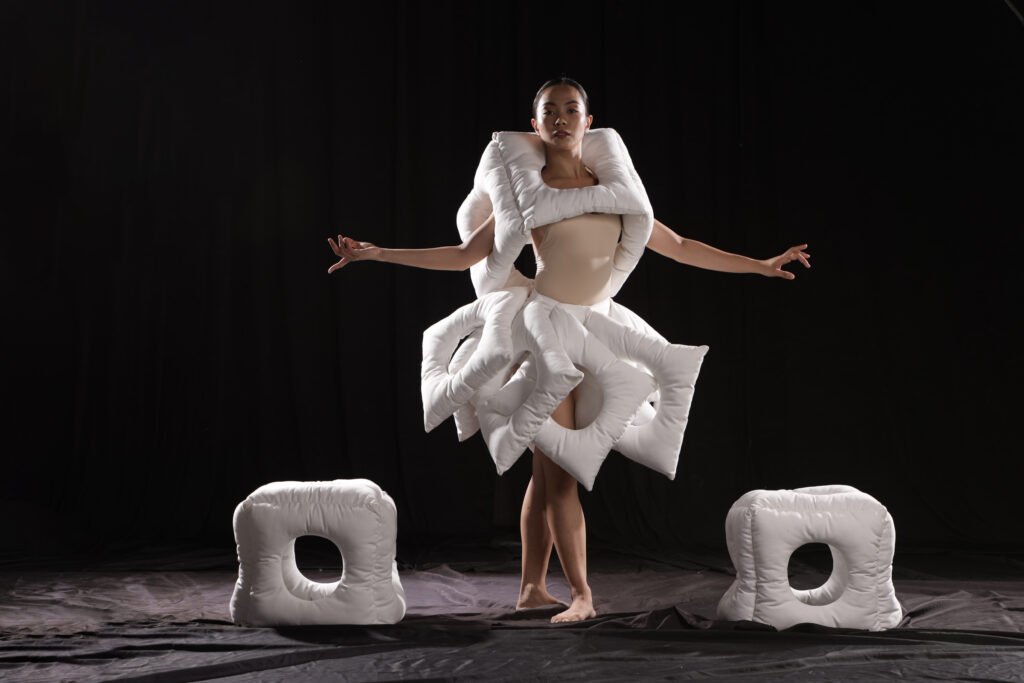

Wooden Costume Apparatuses
For sustainability purposes, all wooden apparatuses were made from recycled construction wooden materials. They are meant to evoke potential and utopic sustainable tendencies. Calma shared that they started crafting the pieces around November of 2022, along with the metal sculptures. The Diyosa team “went around the Philippines to take photos and look for inspiration” in order to showcase spaces and forms that can truly represent Filipino culture.
Wooden apparatuses for the Goddess of Earth and the Goddess of Fire, as seen on stage. Photographed by Gabrielle de la Cruz.
The apparatuses can be seen as deconstructed ensembles of a shelter, as environmental devices that change in different scales. During the play, the wooden apparatuses entered and exited along with the characters they correspond to. “I think the hardest part was having to make sure everything was equal as we moved and brought the looms to the stage along with our partners,” shared Joanne Sartorio-Guillermo, Goddess of Star for Cast 2. “Some pieces were a bit heavy for us girls too, but overall we enjoyed it.”
The plastic pellets in the anito looms are made of recycled plastic bottles and plastic sachets. Photographed by Gabrielle de la Cruz.
Having the ability to grow and morph in places and cities exponentially, the apparatuses demonstrate a contextual relationship between time, atmosphere, and space—blurring the boundaries between reality, virtual and cinematic utopia. They also illustrate the constant dialogue of the future of our cities that have scalability and resonance for generations to come.

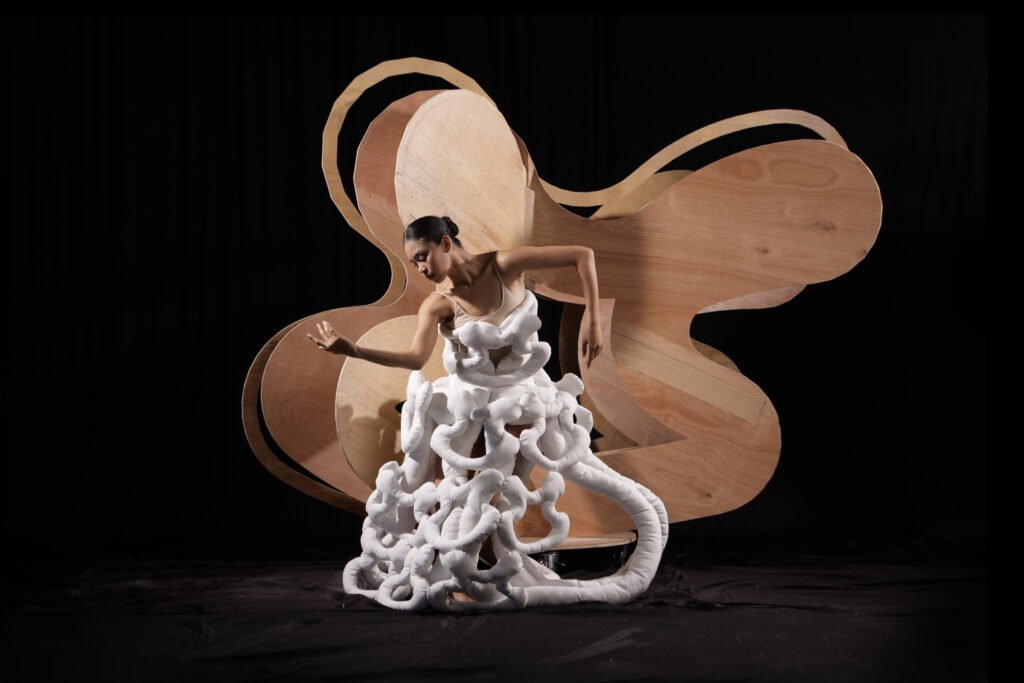
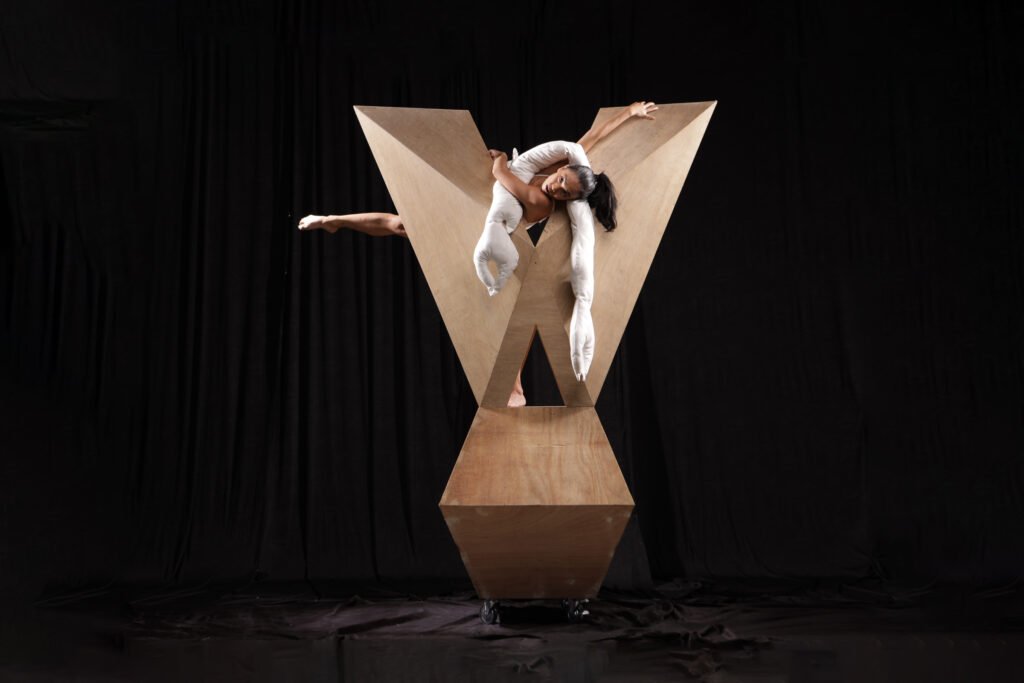
Balete and Vines Sculptures
The balete and vines sculptures are reflective stainless material with luminous and kaleidoscopic qualities, showing color as an integral part of the mythical feeling and emotions in the psychology of color and energies. These balete inspirations illustrate a monstrous type of architecture given their often habitable gigantic vines.

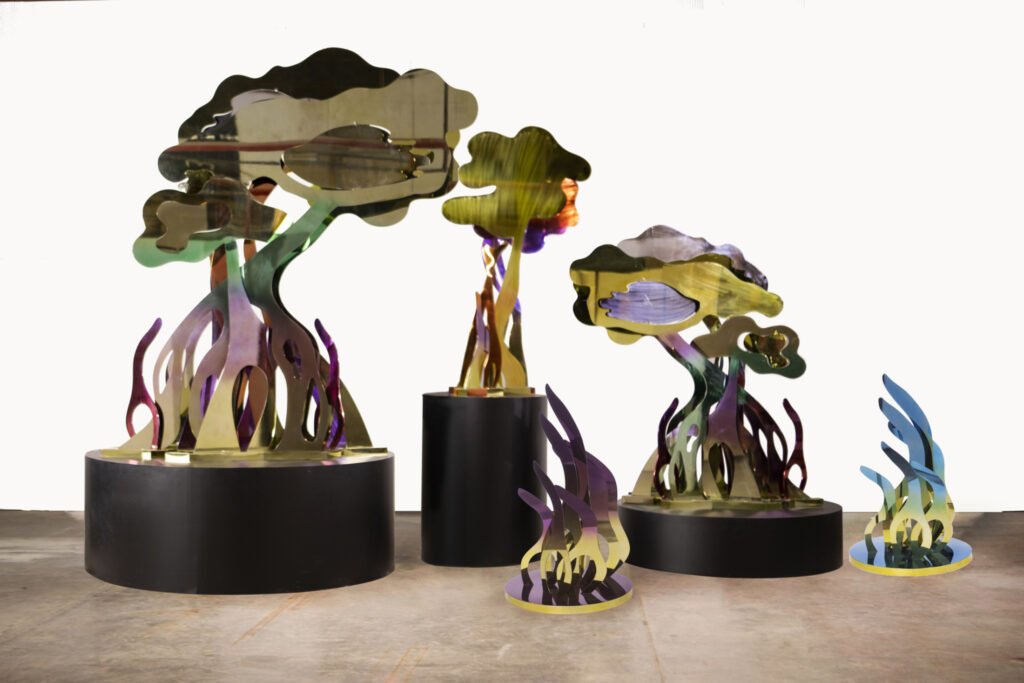
Marine Life Sculpture
With its spiky formations, the marine life sculpture is a transfigured creature that can be interpreted as both a sea urchin and a cockroach. The dual character of the marine life kinetic sculpture embodies genetic or environmental mutations when we spoil our natural resources.
Marine Life Sculpture and its close-up details
This particular piece was present on the right side of the stage throughout the play. Calma explained that the piece can be read as a symbol of destruction, a constant reminder of what could happen when change is not initiated. The architect added that a hashtag installation piece or character formed part of the show as Diyosa’s main message is to make a stand, to call on everyone to use their voices in saving the planet.
When asked what happens to all the pieces, wearable installations, and apparatuses after five successful Diyosa shows, Calma revealed that they will be reused as they plan to restage Diyosa. “Part of the comments after all the shows was that aside from being a collaboration of various creative fields and mediums, Diyosa allows people to get a good grasp of the Filipino culture. Who knows? We might even get to take this abroad.” •
